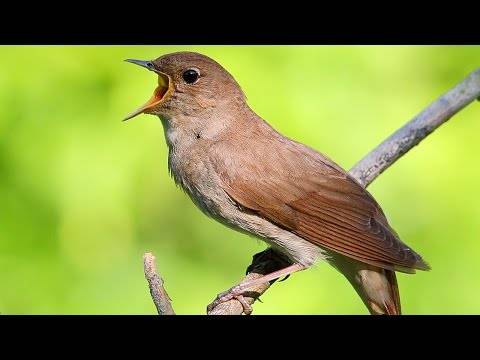The nightingale, a small and unassuming bird, holds a special place in the world of nature and literature. Known for its melodious songs that captivate the hearts of many, the nightingale has garnered attention and admiration throughout history. Here are five fascinating facts about this enchanting creature:
1. Melodious Virtuoso:
The nightingale is renowned for its exceptional singing abilities. Its song, often heard during the spring and early summer nights, is a complex medley of trills, whistles, and gurgles. Interestingly, male nightingales sing to attract females and establish their territory, creating intricate and varied melodies that can last for hours. The nightingale's song has inspired poets, musicians, and artists for centuries, serving as a muse for some of the most celebrated works of art and literature.
2. Hidden Plumage: While its voice is captivating, the nightingale's appearance is rather modest. With a brownish hue and subtle streaks, its plumage allows it to blend seamlessly into its natural surroundings, ensuring protection from predators. This unobtrusive appearance makes the nightingale a master of camouflage, allowing it to stay safe while it serenades the world with its enchanting melodies.
3. Migratory Wonders:
The nightingale's remarkable journey takes it across vast distances twice a year. It is a migratory bird, spending its summers in Europe and parts of Asia, and migrating to Africa for the winter. The nightingale's migration is an awe-inspiring feat, covering thousands of miles and crossing numerous geographic barriers. This long journey reflects its incredible endurance and adaptability to different environments.
4. Literary Symbolism: The nightingale has long been a symbol of beauty, inspiration, and creativity in literature. From ancient Greek myths to works of poets like John Keats and Hans Christian Andersen, the nightingale has been celebrated for its ability to evoke powerful emotions through its song. It often symbolizes the ephemeral nature of life, the pursuit of artistic expression, and the longing for a connection to nature.
5. Decline and Conservation:
Despite its cultural significance and captivating melodies, the nightingale faces challenges in the modern world. Changes in habitat due to urbanization, pollution, and agricultural practices have led to a decline in their numbers. Efforts are being made to conserve these birds and their habitats, emphasizing the importance of preserving the delicate balance of ecosystems to ensure the nightingale's continued presence and song.
In conclusion, the nightingale's unassuming appearance belies its extraordinary qualities. Its melodious song, hidden plumage, migratory feats, literary symbolism, and conservation needs all contribute to the mystique that surrounds this charming creature. As we appreciate its captivating melodies, let us also strive to protect its habitats and ensure that its song continues to grace our nights for generations to come.


